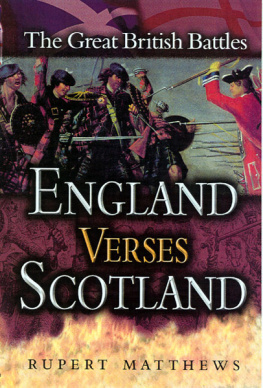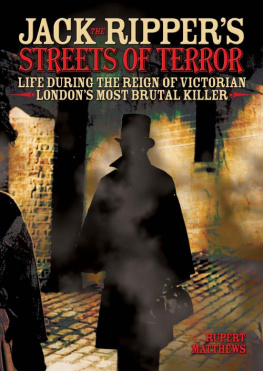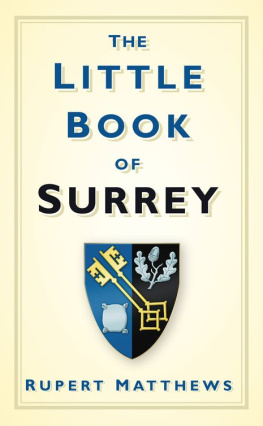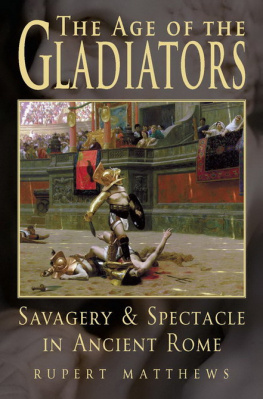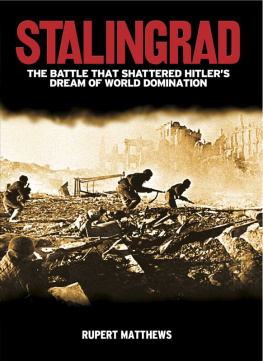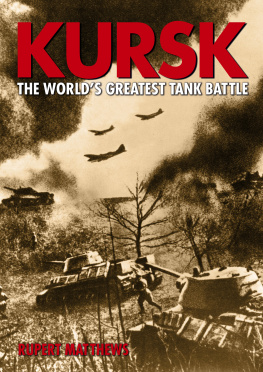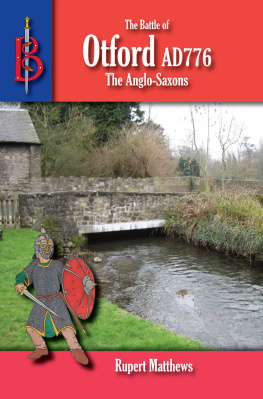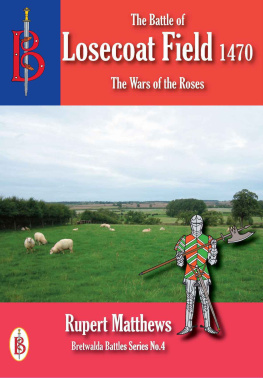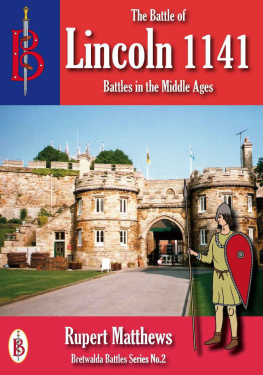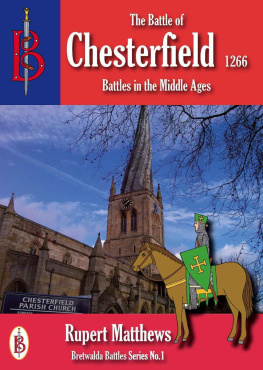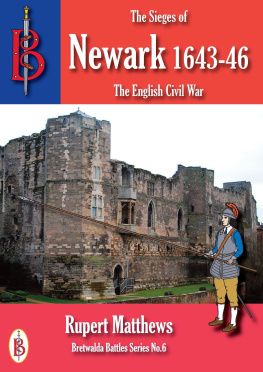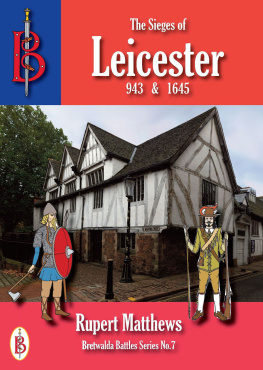First published in Great Britain in 2003 by
Leo Cooper
an imprint of Pen & Sword Books
47 Church Street
Barnsley
South Yorkshire
S70 2AS
Copyright Rupert Matthews 2003
ISBN 0 85052 949 2
PRINT ISBN: 9780850529494
PDF ISBN: 9781783377558
EPUB ISBN: 9781783379750
PRC ISBN: 9781783379552
A catalogue record for this book is available from the British
Library
Contents
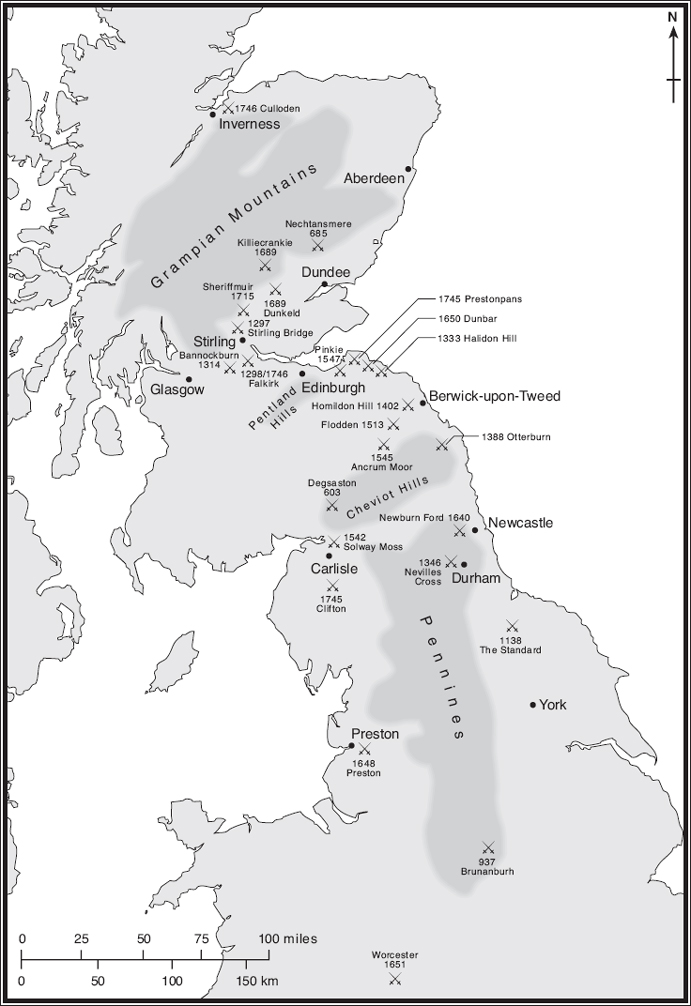
The locations of the battles described in this book. Detailed directions to find each battlefield and a guide to what there is to see on the site today are given at the end of each chapter.
Introduction
The island of Britain contains two kingdoms: England and Scotland.
Over the years the two kingdoms have been rivals, allies, friends and enemies. In the very earliest days, both the Scots and the English were foreigners to Britain. The Scots were an Irish tribe settled in the lands around Kintyre while the English were invaders from northern Germany.
As Roman control over the province of Britain collapsed in the fifth century the English and the Scots both expanded their power and their territories. It was inevitable that they would eventually clash and battle was joined at Degsaston in about the year 603. At the time neither the English nor the Scots were a unified people and some years later the northern English fought against the Picts at Nechtansmere. The climax of these early battles came at Brunanburh, possibly the most decisive battle ever fought in Britain.
The truth about these early battles can be difficult to trace in any detail. The chroniclers often blurred events and places, and were hopelessly inaccurate when dealing with figures. It is sometimes impossible to know exactly where the battle was fought and what happened. The author has walked the likely sites of the battles and closely studied the contemporary accounts. He is confident that he has been able to recreate what happened.
By the time of the Battle of the Standard, the Scots and English had left the Dark Ages behind them and had become unified states in name, if not always in fact. The Kings of England claimed a vague superiority over the Kings of the Scots, though it was never entirely clear what this meant. For the next four centuries the relationship between the two nations led to the battlefield as often as to the marriage altar or the negotiating table.
Even when set piece battles were not taking place, relations were rarely peaceful. Numerous invasions led not to battle, but to ambush, siege and skirmish. And the borders were a place of continual raid, revenge and feud. The years were few indeed that did not see bloodshed of one kind or another.
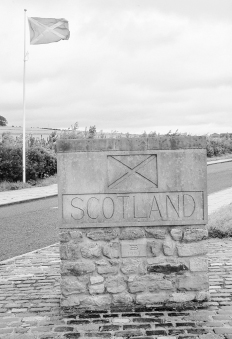
The English/Scottish border marked by stone and flag beside the north bound carriageway of the A1 north of Berwick.

The monument to the battle at Nechtansmere. The battle was fought over 1,300 years ago, but the monument is only a few years old. The continuing relevance of the old battles between England and Scotland, as the two nations recover their identities, could not be more clearly demonstrated.
Finally the death of childless Queen Elizabeth I of England gave the throne of England to King James VI of Scotland. The two nations, after centuries of conflict, were united under a single monarch. Even that could not bring peace. In 1640 Scotland invaded England once again and a fresh round of bloodshed began.
The final battles between the two peoples came after the English ousted King James II in 1688. James, a Stuart, was also King of Scotland and the old royal family of Scotland retained many supporters in the northern kingdom. These folk resented the removal of their Scottish king. The supporters of the exiled King James were known as Jacobites, from the latin version of the name James, and at first were found in England as well as in Scotland. The Jacobite uprising of 1715 saw fighting in England as well as in Scotland. By 1745, however, support for the Stuarts was found only in Scotland. The rising led by Bonnie Prince Charlie, which began in July, lasted many months and was the last time that armies of Scots faced the English in battle.
After 1745 the English and the Scots were united not just by a monarch and a Parliament but by a strong sense of mutual self interest. Working together, the Scots and English became British and set out to conquer the world. The British Empire was a joint creation of the two nations, as was the commercial wealth that flowed into Britain.
Even when the two nations were working together there was a rivalry between them. In the two World Wars regiments drawn from England and Scotland would engage in banter and the occasional fist fight. But woe betide any American, French or other outsider who took sides for they would soon find the Scots and English united against the foreigner.
After the collapse of Empire the rivalries and differences between Scots and English began to grow more pronounced. Some Scots began to wonder why they were ruled by a joint Parliament in London. In the 1970s a vote in Scotland failed to gain a clear majority for a Scottish Parliament, but such a vote was achieved in the 1990s. A Parliament was established in Edinburgh to look after domestic Scottish affairs. There was a growing feeling that Scotland could do without England.
The English, meanwhile, had been annoyed when the Scots Tartan Army of football fans tore down the goalposts at Wembley in 1977. But during the 2002 World Cup many English were seriously shocked by the vehemence with which Scots supported whichever football team was playing against England. The English noticed that Scots MPs in the Westminster Parliament could vote on English affairs, but English MPs could not vote on the same affairs which were dealt with in Edinburgh. And the English wondered why large sums of English taxpayers money was spent in Scotland when the Scots seemed so anti-English.

The site at Holyrood in Edinburgh where the main buildings of the new Scottish Parliament are being erected to mark Scottish nationhood in the eyes of the Scots and an enormous waste of English tax money in the eyes of the English.
With a growing sense of nationalism among both the English and the Scots it is perhaps time to look back to the days when the two kingdoms were, indeed, separate nations. It is possible to commemorate the heroism shown and great deeds performed on both sides and to trace the course of the campaigns and battles which contributed to the history of both nations.
Whatever the future may hold for the two peoples, it must surely be hoped that warfare is not included
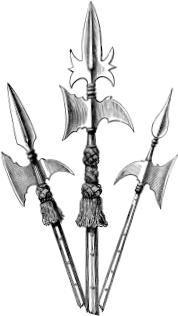
Chapter One
DEGSASTAN 603
Introduction
The first clash between the English and the Scots came about because of the collapse of the post-Roman British power in the area around Hadrians Wall. At the time both the English and the Scots were small in numbers and occupied only a fraction of the territories now covered by England and Scotland. The battle which took place at Degsastan looked at the time to be decisive, but was in fact just the opening round in what proved to be over a thousand years of warfare.
Next page
